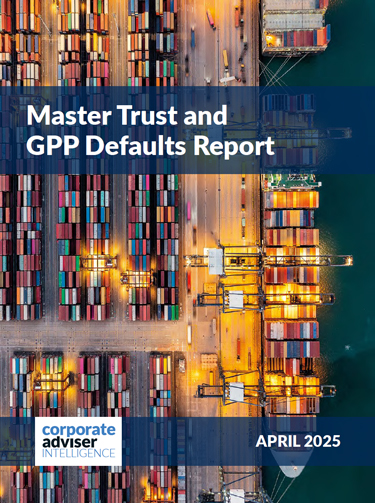A combination of market factors and regulation have already led to a dramatic consolidation of workplace pension funds.
But the Government is set to turbo-charge the process with new minimum asset levels for multi-employer funds, with a start date possibly as early as 2030.
With suggested of minimums of £25bn or £50bn applying potentially at scheme or default fund level, the pensions sector and pension advisers are grappling with the implications.
The Government’s motivation is clearly stated, one that it keeps returning to in the array of speeches, reviews and consultations. It wants more investment in productive or growth assets. This usually comes with the associated claim — albeit one disputed by many in the workplace pensions sector — that members will benefit from better returns.
Practical objections
There certainly remain many practical concerns about plans for these ‘mega funds’. The Lang Cat’s director of public affairs Tom McPhail says: “Much depends how hard the DWP wants to press on the accelerator to force the pace of consolidation. Ultimately it should lead to fewer, bigger, better-run schemes but there is a delicate balancing act here. If you look at outsourcing from the public sector there are effectively only four big firms competing for multi-billion-pound contracts, and in many cases now doing a pretty poor job and not delivering value for money. You can see the importance of retaining genuine market competition when going down this road.
“The risk is you end up with a highly concentrated sector where all the participants are rewarded for failure and, in the case of pension schemes, employers have no real choice around what they do for their employees.”
He adds that there is also uncertainty over how quickly the sector can consolidate, given the myriad overlapping policy interventions currently underway.
Head of pensions at Aegon Kate Smith agrees: “The combination of the Value for Money (VfM) framework and the proposed minimum scheme size of between £25 billion and £50 billion will have a seismic impact on the DC market, which will look very different in 10 years’ time.
“Neither of these proposals are set in stone yet. But the strategic direction of the government and regulators is clear: fewer, but bigger, better run pension schemes with the resources and capability to invest in a greater diversification of assets, supporting UK economic growth and delivering better member outcomes.”
The overarching rules are expected to be included in this Spring or Summer’s Pension Schemes Bill, with the detail in secondary legislation and rules, which may involve future consultations periods.
Smith adds “We expect single-employer schemes will start to consolidate at a faster pace over the next couple years, if the trustees and employers believe they are unlikely to meet VfM criteria and don’t wish to carry out a full assessment under the framework.
“One of our concerns is the possible lack of capacity in multi-employer schemes to absorb all the schemes wishing to or being forced to consolidate, as well as the capacity in EBCs and corporate advisors.” She points out that this consolidation process takes up a lot of skilled resources and can take many months or even years to complete per scheme. “Those wishing to consolidate early, may wish to get their slot early with their chosen consolidator,” she adds. “The government is also proposing setting a maximum number of default funds or arrangements per multi-employer arrangement. Depending on how low they set this, it could impact on employer choice, with employer bespoke default arrangements becoming a thing of the past. Instead, the transferring single employer pension scheme may have a limited choice of default arrangements going forward.”
Immediate impact
Corporate advisers say the plans are already having a significant impact, even with so much detail to be decided.
Mark French, co-head of WTW’s defined contribution research team says: “While some providers are well-positioned to reach the target, the market as a whole faces significant challenges. The move to fewer defaults with greater scale also depends on how the scale is measured and at what fund structure level assets are considered to be a default fund. For example, at the top-level, target date or lifestyle level, the blended growth fund level or underlying sub-funds. A smaller number of very large passive index funds will typically plug into most provider default strategies.
“Providers may face operational challenges due to the historical accumulation of many defaults, the difficulty in easily transferring assets, and associated operational costs. The 2030 timeframe does allow some time for providers to transition assets out of older funds into a single default and use methods to mitigate some of the costs, but this could potentially be a distraction for them and absorb capacity and resources.”
Pension lawyers note a number of legal hurdles. Arc Pensions Law partner Sonya Fraser says: “The government is very aware that changes will be needed to legislation to enable this to happen. To set these minimum size requirements at default level and maximum number of defaults will, in itself, require changes to the legislation.”
She welcomes the move to allow contract-based arrangements to be moved, although again she notes, this require changes to legislation and the FCA handbook, as will the VfM proposals, which will force schemes with a ‘red’ rating to move.
“These are very radical proposals,” she says. “If they go ahead, it is going to change the DC commercial landscape significantly.
“For the existing authorisation regime, schemes would only be winding up if there was some kind of failure, or if things weren’t working as planned. So, the legislation is actually very cumbersome and prescriptive when it comes to winding up and transferring out for authorised master trusts.
“We have had a scheme that was just going through an ordinary business-as-usual type consolidation and to enable that to happen was really tricky under the legislation.” This will have to become far more streamlined she adds.
Employer concerns
French says the proposals are already having a significant impact with employers. “I believe this is already influencing decision-making. Employers are now compelled to consider scale as part of their selection criteria for new providers, in addition to the design and quality of the default fund. This is likely to make it harder for newer master trust providers to break through due to lack of brand power, longevity in the market and scale.
“Some employers will have concerns regarding the movement of their assets into fewer default funds and might be reticent about having their assets moved without their buy-in on design and suitability. They may also face increased management costs and lose the benefits of their own scale in terms of negotiating on price if they are moved into a single default fund arrangement.”
For those who consider the wider political context, this represents a rather extraordinary shift in government thinking, which is adding more systemic risk into the pension system.
Asset management expert JB Beckett, author of New Fund Order says: “More than 16 years on from the Global Financial Crisis the political mantra in the aftermath of preventing ‘too big to fail’ has now been supplanted by ‘too small to control’. The policy will give rise to more super-tanker funds and less choice.
“We can muse this is the reality of regulatory cycles. The order of the day is government intervention to consolidate public pensions and the wider pension and asset management market, to more easily influence allocation policy. The collateral damage will be less choice for clients. The merit of choice will be subordinated by the push to increase contribution levels and also to control how pension assets are invested.
“Yet in many ways consolidation and centralisation have been a defining trend since the GFC, the rise of what I dubbed in 2013 as ‘super-tanker funds’. This has been largely driven by industry dynamics not policy. We could view it occurring right along the value chain. From consultants, platforms, wealth managers, fund managers through to DFMs and advisers.
“Super-tanker funds today are more likely to be pension funds or index ETFs. They can pose a level of systemic and liquidity risk that policymakers appear naive to. In short, their size, whilst creating useful economies of scale, can also create latent diseconomies, market distortions and reduce portfolio agility to respond to market shifts and investor behaviour. They can aggregate
the needs of the individual into a pooled approximate.
“Rachel Reeves’ mega-funds strategy for the defined contribution market will create
new super tankers to emulate that Australian/Canadian Superannuation utopia in order to energise UK infrastructure investment.”
He concludes that in principle at least this is all “laudable stuff” helping to drive a sense of societal purpose. But he warns: “As ever policy change will drive unexpected investment outcomes. Much depends where you sit on the notion of greater good over individual rights.”
What we know (and what we don’t) about mega-funds
The Government’s rationale for forcing the consolidation of multiple employer scheme is set out clearly in the interim report of the Pensions Investment Review, published alongside Chancellor Rachel Reeves’ Mansion House speech in November last year.
It asserts that “pension funds begin to return much greater productive investment levels once
the size of assets they manage reaches between £25-50 billion”.
The report notes that Canadian pensions invest around four times more in infrastructure and Australia three times more in infrastructure and 10 times more in private equity compared to UK DC schemes.
The related consultation paper ‘Pensions Investment Review: Unlocking the UK pensions market for growth’ has two proposals to effect this change: multi-employer DC schemes used for AE should have a maximum number of defaults and these defaults should operate at a minimum size.
Yet there remains a significant amount to be decided. For example, the consultation grapples with the fact a flow of contributions into a default arrangement may all be invested in one default fund or, alternatively, may be invested in a range of default funds by a provider.
This prompts the question from the paper about whether to apply a minimum at default fund level or default scheme level. It discusses the number of default funds on offer from a scheme while adding that Australian schemes have benefitted from just one default.
The paper adds that there is no conclusive evidence of optimal size of AUM at default fund level in DC pension schemes, but that a number of papers suggest a greater number of benefits can start to arise at £25 billion to £50 billion (or greater) including on in-house investments, access to wider asset classes, and other scale benefits.
The paper notes the radical nature of the proposal and suggests some compromises in a transition phase. “It is inevitable that for many providers this will be a considerable change and so we are considering putting in place a process for progress reporting against predetermined criteria for these schemes to ‘staircase up’ their value and reduce the number of default funds they operate”.
This could involve an ‘expectation pathway’ to meet the required minimum size of assets under management, or for schemes to set out their plan for how they can meet the requirements or consolidate. Plans would be monitored by regulators.
There are several more partially related matters to be decided some requiring legal changes.
The Government is proposing to legislate to allow contractual overrides and replacement without individual consent for contract-based pensions – dealing it says with disengaged savers – with appropriate protections that would be set out in FCA rules and possible revised requirements for receiving trustees.
Another radical element of the reforms is a suggestion that the Government could move to end differential pricing, and a discussion of increased employer responsibilities around value — potentially including the regulation of pensions advice to employers.





